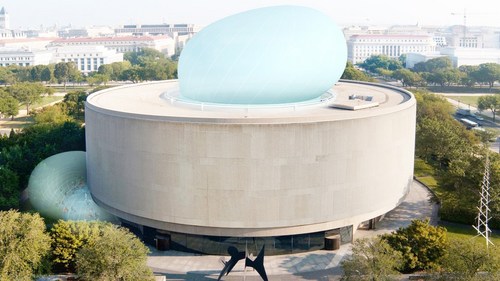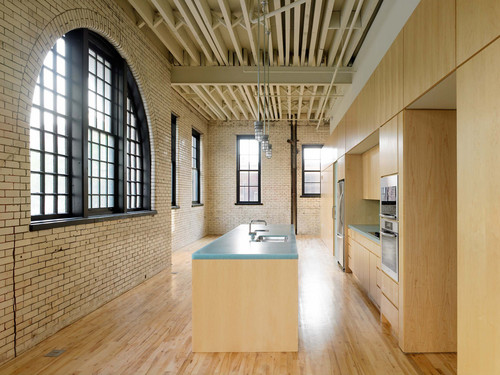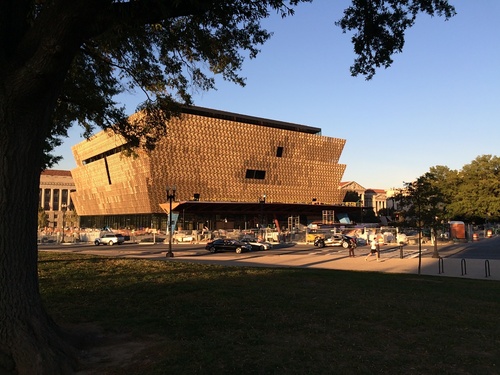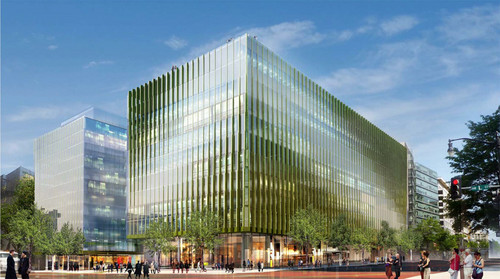Seven designers are bidding for Obama’s presidential library. Here’s what they’ve done in DC.

Like all US presidents, a library will be dedicated to Barack Obama. Photo by IIP Photo Archive on Flickr.
Seven teams are bidding to design Barack Obama’s presidential library. They’re all well-regarded modern architects, and a few have projects in the DC area.
Only one of the teams, John Ronan Architects, comes from Chicago, where the library and museum of the 44th president will eventually rise. Most work out of New York, but teams have roots in London, Genoa, Paris, and Oslo as well. Like a lot of high-profile architecture nowadays, all have projects flung across the globe.
Their work is different from the previous generation of designers, who tended to create object-like buildings that feel aloof from street life. The potential architects of the Obama library all have projects that sit carefully in their context and play nice with existing streets, even if they don’t disappear into the neighborhood stylistically.
That’s a big deal because both of the proposed sites in Chicago are landmark parks in socially diverse neighborhoods. And that means a monumental building floating in a parking lot, like the elder Bush and Clinton’s libraries, isn’t going to happen.
Will it be good? The real test is seeing these architects’ buildings in person. Luckily, you might be able to do that at lunch.
Three of the candidates them have projects in DC
Out on New York Avenue NW, John Ronan Architects created the Yale Steam Laundry Condominiums by converting a landmarked commercial laundry facility. The architects highlighted the irregularities of the original building with minimalist alterations in industrial materials like wood and steel.
A different architect designed the larger new building to the east, but Ronan designed both building’s rugged amenity spaces in the wing set back from the street.
Tucked into the base of a glass office building on 10th Street NW, the First Congregational United Church of Christ could easily be mistaken for another storefront, just set in black, textured brick and a raw bronze column. Really though, what you’re seeing is the church’s foyer, designed by Tod Williams Billie Tsien. Through the lobby’s massive doors is a softly lit sanctuary that blocks out the noise of downtown.
Design writers often pick London-based architect David Adjaye of Adjaye Associates
as the likely choice to do the Obama library. His influence is unusually strong in DC: Only London has as more buildings by his office. So far, the most notable Adjaye building in DC is the National Museum of African American History and Culture near the Washington Monument.
Farther afield are two libraries Adjaye designed a few years ago east of the Anacostia River. Both use transparency and reflections to create atmosphere. His firm divided up the Bellevue Library into a series of rooms that overlook Atlantic Street in Southwest while still offering seclusion though panes of colored glass.
The Gregory Library is a more extroverted design, with a façade that alternates transparent or mirrored panels. The effect is that a pedestrian on the street sees the neighborhood overlaid on the interior. At oblique angles, the library disappears into the woods of Fort Davis. The wood-lined interior is more conventional, except for a staircase the plunges into the airy popular collection room.
If plans to go through, Adjaye will also design a high-end residential building at Georgetown’s West Heating Plant. With the plant needing to go through at least five design review stages, though, the Obama Library might get built first.
Two candidates almost have a presence in DC
In addition to that heating plant project, two of the other firms have designed unbuilt projects for DC.
New York-based designers SHoP are designing the new Fannie Mae headquarters on L Street. The U-shaped glass office building at the former Washington Post headquarters will have a slightly unusual facade, with the angle of the glass changing gradually from end to end and top to bottom. This is similar to a lot of their work: boxy forms fitted out in shifting steel and glass facades.
In DC, Diller Scofidio + Renfro are best known for their “bubble:” an inflatable temporary structure that was going to sit inside the Hirshhorn courtyard. That scheme deflated for cost and feasibility reasons under the last director. They also submitted a design for the NMAAHC.

Rendering of the Hirshhorn bubble, courtesy of DS+R.
A couple don’t have anything to show
The Norwegian firm Snøhetta has no buildings in DC. They did, however, renovate Times Square, so it’s not hard to find their work. Rather than try to tame the iconic space, they covered the ground in rugged concrete pavers embedded with steel disks that echo the billboards that crossroads is famous for.
The last firm, run by Renzo Piano, is the most established choice. His company’s recent designs using glass and natural materials have been expertly detailed, austere, and conservative. That sounds like Washington’s reputation, so it’s sort of odd that he’s never had anything even considered in Washington.
As DC’s downtown shows, it’s tough to make a monumental building that also fits into an urban site nicely. Too often notable architects produce unfriendly places that photograph well. But perhaps this time, the Obama Library Foundation will pick a design that’s not a monument, and connects with the public space around it.
Take a look at these buildings. Do you think that could happen?







